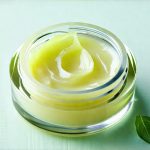Finding convenient energy sources is crucial in today’s fast-paced world. Many people rely on energy bars for quick fuel during commutes, workouts, or busy workdays. However, for individuals with sensitive bladders – those prone to urgency, frequency, or interstitial cystitis (IC) symptoms – choosing the right energy bar can be a significant challenge. Common ingredients in many popular brands can act as bladder irritants, leading to discomfort and disruption. This article aims to navigate this complex landscape, offering guidance on identifying bladder-safe energy bars and providing options for sustained energy without compromising your well-being. We’ll explore ingredient considerations, brand recommendations, and tips for mindful snacking to support a comfortable and active lifestyle.
The key to finding a bladder-friendly energy bar lies in understanding potential irritants and proactively seeking alternatives. Many seemingly innocuous ingredients can trigger symptoms in sensitive individuals. These often include artificial sweeteners, citrus fruits (and their extracts), chocolate, caffeine, spices, and even high amounts of certain sugars like fructose. It’s also important to recognize that individual sensitivities vary greatly; what bothers one person may not affect another. Therefore, a degree of experimentation and careful label reading is essential. The goal isn’t necessarily to eliminate all potential irritants but to minimize exposure and identify your personal triggers. This article will provide a starting point for making informed choices and finding energy bars that support rather than sabotage your bladder health.
Understanding Bladder Irritants in Energy Bars
Energy bars are often marketed as convenient, healthy snacks, but their ingredient lists frequently contain substances known to aggravate bladder conditions. The prevalence of artificial sweeteners is particularly concerning. Sucralose, aspartame, and saccharin are commonly used to reduce sugar content, but they can be significant irritants for many with sensitive bladders. These sweeteners aren’t metabolized the same way as natural sugars and can cause inflammation or changes in urine pH that contribute to symptoms. Similarly, high fructose corn syrup is best avoided due to its potential to exacerbate bladder discomfort.
Citrus fruits – including lemon juice, orange peel, and grapefruit extract – are also frequent culprits. Their acidity can directly irritate the bladder lining, leading to urgency and pain. Chocolate, while seemingly benign, contains compounds like oxalate which some individuals find problematic. Caffeine, a common addition for an energy boost, is a well-known diuretic that can increase frequency and exacerbate symptoms. Finally, spices such as cinnamon or nutmeg, often included for flavor, can also contribute to irritation in sensitive individuals. It’s crucial to remember that these are potential irritants – not everyone will react to them. If you’re struggling with recurring issues, exploring UTI prevention supplements might also be a helpful step.
When examining an energy bar label, it’s important to look beyond the marketing claims and scrutinize the full ingredient list. Be aware of hidden sources of irritants; for example, “natural flavors” can sometimes contain citrus extracts or other problematic ingredients. The fewer artificial additives and potential bladder triggers, the better. Choosing bars with a short, recognizable ingredient list is generally a good strategy.
Navigating Label Reading & Ingredient Alternatives
Successfully identifying bladder-safe energy bars requires becoming adept at label reading. Don’t just focus on sugar content or protein levels; pay close attention to every listed ingredient. A helpful approach is to create your own “avoid” list based on your personal sensitivities. If you know citrus fruits consistently trigger symptoms, any bar containing them should be avoided regardless of other appealing features. Consider keeping a food diary to track what you eat and how it affects your bladder – this can help pinpoint specific triggers.
When looking for alternatives, prioritize bars with minimal processing and natural ingredients. Dates are an excellent source of sweetness and provide fiber without the drawbacks of artificial sweeteners or high fructose corn syrup. Nut butters (almond, cashew, sunflower seed) offer healthy fats and protein. Oats contribute to sustained energy release. Coconut oil can be a good fat source for some, although sensitivity exists. Look for bars sweetened with maple syrup in moderation – it’s generally better tolerated than many other options.
Don’t hesitate to contact the manufacturer directly if you have questions about an ingredient. Furthermore, understanding the best foods for urinary tract health can help inform your choices beyond just energy bars. Online communities dedicated to bladder health often share experiences and recommendations for specific brands and products – these can be valuable resources. Remember that finding the right energy bar is a process of experimentation and self-discovery.
Identifying Safe Protein Sources
Protein is essential for sustained energy and muscle recovery, but some protein sources can be problematic for sensitive bladders. Soy, while often touted as a healthy option, can sometimes cause irritation in individuals with IC. Whey protein – commonly found in many bars – also falls into this category for some people due to its dairy content and potential for inflammation.
Instead, look for bars that utilize plant-based protein sources like pea protein, brown rice protein, or hemp protein. These options are generally better tolerated and offer a comparable nutritional profile. Nut butters contribute both protein and healthy fats, making them an excellent addition to bladder-friendly recipes. When selecting a bar, check the source of protein carefully and consider your individual sensitivities.
Understanding Sugar Alternatives & Their Impact
The desire for low-sugar energy bars often leads manufacturers to utilize artificial sweeteners or sugar alcohols. As previously mentioned, artificial sweeteners like sucralose and aspartame can be significant bladder irritants. Sugar alcohols such as xylitol, sorbitol, and mannitol are also problematic; they aren’t fully absorbed by the body and can cause digestive upset, potentially exacerbating bladder symptoms.
A more bladder-safe approach is to choose bars sweetened with natural alternatives in moderation. Dates provide a naturally sweet flavor while offering fiber and nutrients. Maple syrup, used sparingly, is generally well-tolerated. Coconut sugar has a lower glycemic index than refined sugar but should still be consumed in moderation. The key is to avoid sweeteners that are known to cause irritation or digestive distress. You may also find it helpful to review low-sugar drink options for overall hydration.
Creating Your Own Bladder-Safe Energy Bites
Rather than relying solely on pre-made energy bars, consider making your own energy bites. This allows for complete control over the ingredients and ensures a bladder-friendly snack. Here’s a simple recipe:
- Combine 1 cup of rolled oats, ½ cup of almond butter, ¼ cup of dates (pitted), 2 tablespoons of chia seeds, and a dash of cinnamon in a food processor.
- Process until the mixture is well combined and sticky. If it’s too dry, add a teaspoon of water at a time.
- Roll into bite-sized balls and store in an airtight container in the refrigerator.
These homemade energy bites offer a customizable and bladder-safe alternative to commercially available bars. You can adjust the ingredients based on your individual preferences and sensitivities. This method also ensures that you’re avoiding hidden irritants and consuming only ingredients you trust.
This article provides a starting point for navigating the world of energy bars with a sensitive bladder. Remember, finding what works best for you requires experimentation, careful label reading, and a willingness to explore alternatives. Prioritizing natural ingredients, minimizing potential irritants, and listening to your body are key to enjoying convenient energy without compromising your well-being. Consider also exploring morning hydration techniques as part of a holistic approach.





















